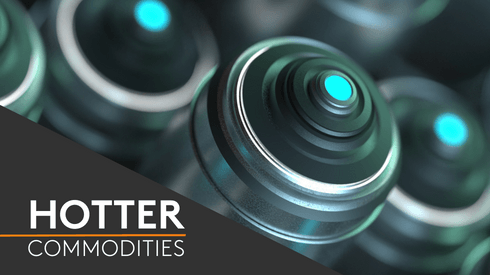Investment has been flooding into the race to make the best use of sustainable and faster extraction technologies of the ultralight metal, such as direct lithium extraction (DLE).
Against this backdrop, a raft of upstream mining investments are continuously being announced while carmakers scramble to secure sustainable supplies of critical raw materials such as lithium.
On April 11, US-based carmaker General Motors (GM) announced that it was leading a $50 million funding round in compatriot start-up company Energy X, while also entering into a strategic agreement with it to unlock the domestic lithium supply needed to drive energy transition.
The collaboration was intended to develop Energy X’s lithium extraction and refining technology.
The start-up is developing a DLE technology intended to make lithium metal in a straightforward manner from brine, and potentially in anode-ready form for electric vehicle (EV) batteries. This would enable more cost-effective and sustainable lithium recovery and would unlock a vast lithium supply chain in North America that would otherwise go unused, it said.
Lithium is currently produced from two main different deposit types – brines and hard-rock – using traditional methods that were now being questioned in terms of sustainability, due to their carbon footprint and water usage.
Using DLE technologies to extract lithium from underground brines (salar and geothermal) had already been proposed, with a variety of methods currently under development.
Supporters of the DLE extraction method claim that it increases the lithia recovery rate from brines, reduces the utilization rate of fresh water, and has a lower carbon footprint than traditional extraction methods, while also reducing the overall amount of time needed for the lithium extraction process.
But most of the junior miners testing DLE technologies are still far from large-scale commercial production. As a result, the commercial viability of most DLE technologies has yet to be proven, market sources said.
US-headquartered lithium producer Livent is one of the few lithium majors currently in operation using a proprietary DLE process. The company utilizes selective adsorption, which uses freshwater to separate lithium from brine, at its Salar del Hombre Muerto operation in Argentina.
Battery material supply chains expanding
With the uptake of e-mobility gaining momentum, companies across the lithium battery value chain continue to expand and vertically integrate to allow for security of sustainable supply of the scarce battery raw materials, such as lithium.
Within this context, on April 11 this year, commodities trader and miner Glencore announced its partnership with energy major lberdrola to provide lithium-ion battery recycling solutions at scale for Spain and Portugal. Cobalt and nickel miner Sumitomo Metal Mining was also considering whether to enter the upstream lithium sector by the end of this decade.
A surge in downstream lithium chemical prices started at the end of 2020, and the ultralight metal has entered a bullish cycle since then, supported by high demand for EV batteries.
This has supported a price uptrend across the whole lithium industry, including technical grades, battery grades and spodumene concentrate feedstock.
But these gains appear to have slowed since the last quarter of 2022, and Chinese lithium prices have been on a downtrend since the fourth quarter of that year, due to a slowdown in demand coinciding with a reduction in the subsidies China offers on EV purchases.
Fastmarkets’ latest price assessment for lithium hydroxide monohydrate, LiOH.H2O 56.5% LiOH min, battery grade, spot price, cif China, Japan & Korea, was $48-53 per kg on April 12, compared with $55-60 per tonne a week earlier.
Fastmarkets’ battery raw materials research team has forecast that the global lithium market will be in a deficit of 68,900 tonnes of lithium carbonate equivalent (LCE) in 2023. But despite the currently weakening spot lithium market, this situation should improve in the long-term because governments and stakeholders across the value chain continue to support hefty investments in lithium mining and refining.
Want more insights and forecasts for the lithium market?
Keep up to date with global market insights and predictions for 2023 and beyond. Gain access to all our predictions for the next ten years by requesting a demo of our lithium long-term forecast.






